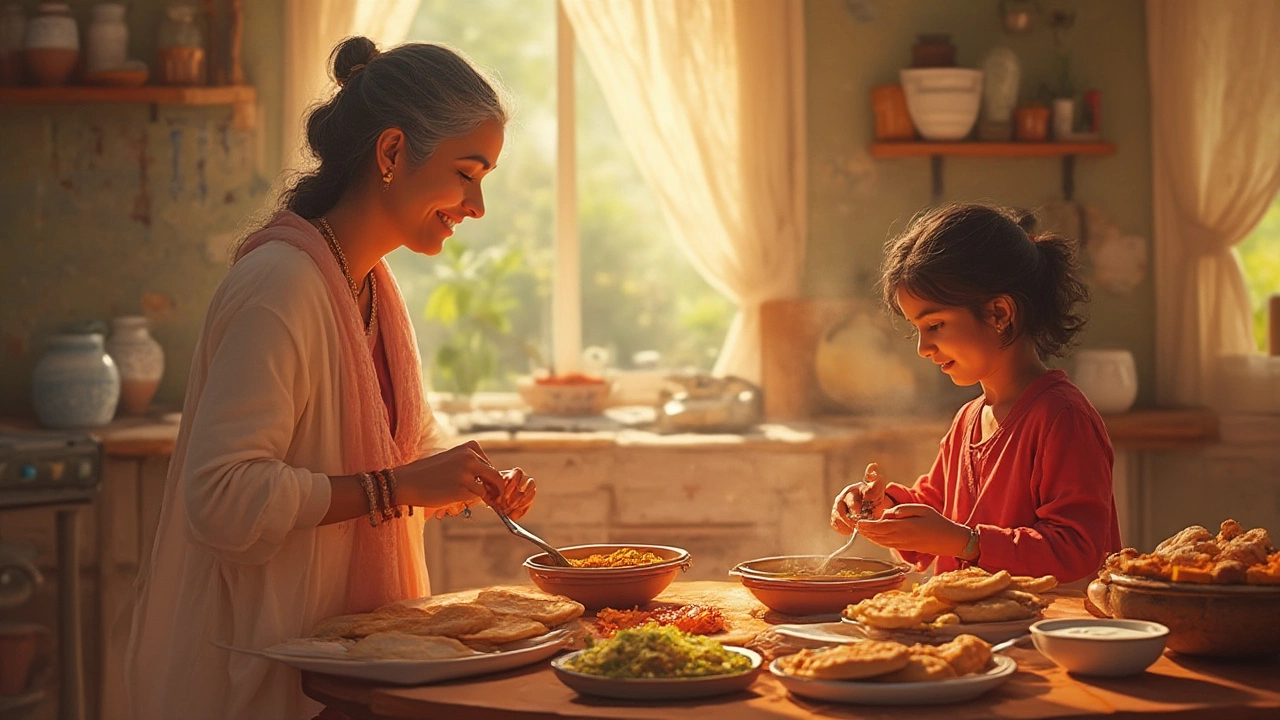Indian Food for Beginners: Your First Steps into Authentic Flavors
When you start with Indian food for beginners, a collection of simple, authentic Indian recipes that help new cooks master core flavors and techniques. Also known as starter Indian recipes, it offers a practical entry point to the rich world of Indian cooking.
One of the first dishes you’ll meet is Dosa, a thin fermented crepe that shows how Indian cooking basics rely on batter fermentation and heat control. Another staple is Dal, the protein‑packed lentil stew that teaches you about soaking, simmering, and spice layering. Finally, Roti—the everyday flatbread—demonstrates dough handling, rolling, and the magic of puffing. Together, these three foods illustrate how Indian food for beginners encompasses basic dishes, requires understanding of spice blends, and benefits from simple kitchen tools.
Why mastering these basics matters
Indian food for beginners demands a good grasp of spice blends. Tempering (known as "tadka") mixes whole spices with hot oil, releasing flavors that define most curries. Without this step, a dal or a curry can taste flat. Likewise, fermentation in dosa batter creates the airy texture you love, while proper dough hydration in roti ensures the dough puffs instead of staying flat. Each technique links back to the central goal: building confidence in the kitchen while preserving authentic tastes.
Let’s break down the key attributes of each starter dish. For Dosa, the crucial attribute is fermentation; the value is a crisp edge and soft interior, achieved by adding a pinch of soda or letting the batter rest overnight. Dal’s main attribute is cooking time; the value varies by lentil type—masoor dal cooks in 15 minutes, while chana dal can need 45 minutes, and the right water‑to‑lentil ratio ensures a creamy texture. Roti’s defining attribute is dough elasticity; the value comes from using whole‑wheat flour, a little oil, and resting the dough, which leads to that satisfying puff.
Health-wise, these beginner recipes are naturally balanced. Dal provides plant‑based protein and fiber, supporting heart health. Dosa, when made with minimal oil, offers a low‑fat carbohydrate base, and Roti supplies complex carbs and micronutrients from whole wheat. Together they form a complete vegetarian meal, a theme we explore in several of our articles about Indian nutrition and balanced thalis.
Now that you know what to expect—simple spice work, easy fermentation, and quick dough tricks—you’re ready to dive into the curated list below. Each post breaks down a specific tip, from soda in dosa batter to the perfect chicken marinade, giving you actionable steps to turn beginner confidence into everyday mastery.

A Guide to Very Mild Indian Dishes: Flavors Without the Fire
Curious about very mild Indian food? Discover gentle, flavorful Indian dishes perfect for sensitive palates, plus tips, facts, and recipes anyone can love.
- Chutney Recipes (13)
- Healthy Living (12)
- General (11)
- Easy Indian Recipes (9)
- Chicken Curry Recipes (9)
- Paneer Recipes (8)
- Healthy Indian Snacks (8)
- Dal Recipes (7)
- Street Food (7)
- Dosa Recipes (7)
-
Tandoori vs Tikka: Which Snack Is Actually Healthier?
1 May 2025 -
Chutney: Should It Be Served Warm or Cold?
30 May 2025 -
The Most Consumed Food in India: Spotlight on Rice
12 Feb 2025 -
Street Food in India: What Is It Really Called?
24 May 2025 -
Why Is My Paneer Rubbery? Common Mistakes, Fixes & Pro Tips
16 Jul 2025
25.07.25
Kaia Binari
0